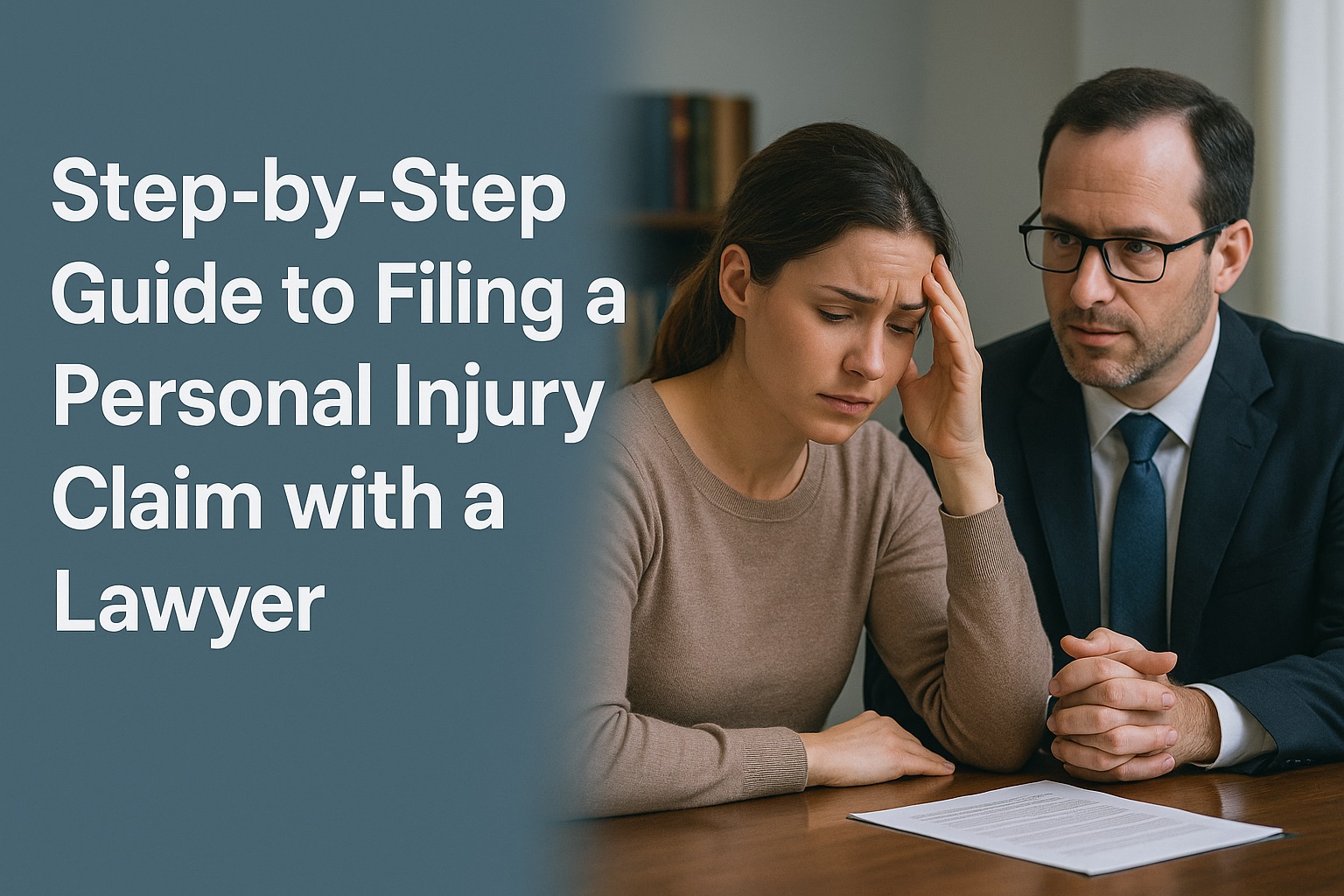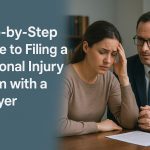Introduction
After an accident or injury, it can feel overwhelming to navigate medical treatment, insurance adjusters, and mounting bills all at once. Hiring a personal injury lawyer helps you focus on recovery while an experienced professional manages deadlines, evidence gathering, negotiations, and court procedures on your behalf. This detailed guide walks you through each stage of filing a personal injury claim—from the moment you decide to consult an attorney through resolution—so you understand what to expect, which documents to collect, how to communicate effectively, and how to maximize your chances of a successful outcome.
1. Recognize the Value of Early Action
As soon as you decide you might want legal help, contact a qualified personal injury attorney without delay. Most states enforce strict statutes of limitation—commonly one to three years—after which you lose the right to sue. Early action ensures that crucial evidence (photos, surveillance footage, witness statements) is preserved before it disappears or degrades. An attorney can also advise you on immediate steps to protect your health and your legal position: obtaining comprehensive medical records, notifying your insurer correctly, and avoiding damaging social media posts or recorded statements.
2. Initial Consultation and Case Evaluation
During your free or low-cost initial meeting, the lawyer asks you to describe how the accident occurred, who was involved, what injuries you sustained, and the financial harm you’ve suffered to date. Be prepared to bring:
- Police or accident reports
- Photographs of the scene, your injuries, and vehicle/property damage
- Medical bills, diagnostic tests, and treatment records
- Pay stubs or employer letters showing lost wages
- Any correspondence from insurers or the at-fault party
The attorney will evaluate liability, causation, and damages and explain whether your claim has a high likelihood of success. You should receive clear guidance on fee arrangements, typical timelines, and what evidence remains outstanding.
3. Engaging Your Attorney and Signing the Fee Agreement
If you choose to proceed, you’ll sign a written representation agreement outlining:
- Contingency fee percentage (commonly 33⅓ %–40 %)
- Scope of services (demand letters, litigation, appeals)
- Cost advance policy (which expenses the firm pays upfront and how they are reimbursed)
- Client responsibilities (providing records, attending medical examinations, responding promptly)
Review every clause and ask for examples showing how the fee structure applies at different stages. Ensure there are no hidden fees or unexpected cost-sharing obligations.
4. Investigation and Evidence Gathering
Your attorney’s team launches a thorough fact-finding mission that may include:
- Interviewing eyewitnesses and drafting sworn statements
- Subpoenaing traffic camera footage, 911 transcripts, security videos
- Retaining accident-reconstruction experts to create 3D models or diagrams
- Collecting employment records to document lost earning capacity
- Commissioning life-care planners for long-term disability projections
Successful investigations hinge on meticulous organization. You remain involved by providing any new medical updates, responding to investigator inquiries, and reviewing drafts of reports or narrative summaries.
5. Medical Treatment and Documentation
Your health comes first. Follow your doctor’s prescribed treatment plan even if it feels time-consuming or expensive. From the earliest doctor’s visit, insist on:
- Detailed progress notes that tie your complaints directly to the accident mechanism
- Diagnostic imaging reports (MRI, CT, X-ray) with clear impressions
- Physical-therapy and rehabilitation records noting functional limitations
- Pain-and-suffering journals recording daily pain levels, mood changes, and activity restrictions
Accurate medical documentation forms the backbone of your claim. A claim without contemporaneous records is vulnerable to insurer attacks claiming pre-existing conditions or lack of causation.
6. Demand Package Preparation
Once you reach maximum medical improvement—or your treating physicians provide reliable future-care estimates—your lawyer assembles a comprehensive demand packet containing:
- A chronological statement of facts with supporting exhibits
- Medical summary of injuries, treatments received, and prognosis
- Itemized billing summary of past and anticipated future medical costs
- Wage-loss calculation, including past wages, overtime, bonuses, and projected earnings impact
- Photographic evidence and expert reports (reconstruction, economics, life-care)
- A clear numeric demand that reflects all categories of damages: economic, non-economic (pain and suffering), and punitive if applicable
A persuasive demand package not only quantifies your losses but tells a compelling human story that resonates with adjusters accustomed to cold statistics.
7. Negotiation and Settlement Attempts
After submitting your demand, your attorney engages the insurer in written negotiations, phone conferences, or mediation sessions. Key negotiation tactics include:
- Anchoring high: Starting with a demand that exceeds your minimum acceptable value to leave room for compromise
- Emphasizing strengths: Highlighting strong liability evidence, sympathetic injuries, and expert opinions
- Addressing weaknesses: Acknowledging minor gaps candidly while explaining why they don’t undermine the overall claim
- Using leverage: Mentioning readiness to file suit—with specific court dates—to incentivize a fair offer
Adjusters often respond with low initial offers. Your lawyer will prepare counter-offers supported by additional documentation or expert testimony until you reach a midpoint that meets your needs.
8. Filing a Lawsuit When Necessary
If negotiations stall, filing suit triggers formal court procedures. Your attorney prepares a complaint outlining parties, legal theories (negligence, strict liability), and requested relief. Key pretrial steps include:
- Service of process on defendants
- Initial disclosures exchanging basic evidence
- Written discovery (interrogatories, document requests, requests for admission)
- Depositions of parties, witnesses, and experts under oath
- Motions practice—motions to dismiss, motions for summary judgment—targeting weak defenses
Litigation enforces deadlines and compels evidence production, often prompting insurers to return to the bargaining table at higher values.
9. Alternative Dispute Resolution (ADR) Options
Many courts and contracts encourage or require mediation, arbitration, or neutral evaluation before trial. ADR benefits include:
- Lower costs by avoiding protracted discovery battles
- Faster resolutions, often in weeks or months rather than years
- Confidentiality, preventing sensitive details from public record
A skilled lawyer prepares you thoroughly for ADR sessions, crafts persuasive briefs, and models rich settlement scenarios to help you make informed decisions on the spot.
10. Trial Preparation and Presentation
Should your case proceed to trial, you and your attorney collaborate on:
- Jury selection strategy to identify sympathetic jurors
- Opening statements that frame your narrative positively and memorably
- Direct and cross-examinations of witnesses, strategizing questions to highlight strengths and expose weaknesses
- Exhibits management, ensuring all photos, charts, and expert reports are admissible and impactful
- Closing arguments that reinforce your theme, recap evidence, and specify the precise verdict form language you seek
Trial is intense and requires both legal skill and emotional stamina. Your lawyer coaches you on courtroom demeanor, prepares you for tough questions, and shields you from unnecessary stress.
11. Verdict, Post-Trial Motions, and Appeals
After the jury verdict or judge’s decision, your attorney handles:
- Judgment enforcement if the verdict favors you and the defendant refuses payment
- Post-trial motions for judgment notwithstanding the verdict or a new trial if legal errors occurred
- Appeals to higher courts if the trial court misapplied the law or significant evidentiary mistakes influenced the outcome
Each step demands strict adherence to procedural timelines and sophisticated briefing. Your lawyer’s appellate experience can determine whether you secure the full value of your claim.
12. Receiving Your Award and Closing Your File
Once all motions and appeals conclude—or the defendant pays voluntarily—your attorney disburses funds according to the fee agreement: deducting attorney’s fees, reimbursing advanced costs, satisfying medical liens, and distributing your net recovery. You’ll receive a final accounting statement and copies of all key documents for your records.








